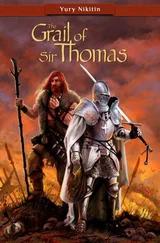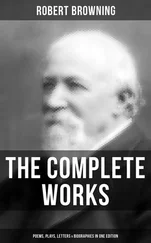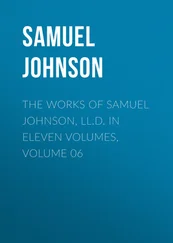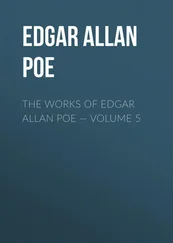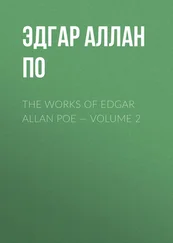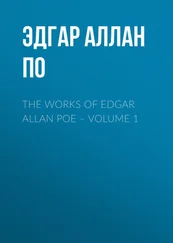Thomas Browne - The Works of Sir Thomas Browne, Volume 3
Здесь есть возможность читать онлайн «Thomas Browne - The Works of Sir Thomas Browne, Volume 3» — ознакомительный отрывок электронной книги совершенно бесплатно, а после прочтения отрывка купить полную версию. В некоторых случаях можно слушать аудио, скачать через торрент в формате fb2 и присутствует краткое содержание. ISBN: , Жанр: foreign_antique, foreign_prose, на английском языке. Описание произведения, (предисловие) а так же отзывы посетителей доступны на портале библиотеки ЛибКат.
- Название:The Works of Sir Thomas Browne, Volume 3
- Автор:
- Жанр:
- Год:неизвестен
- ISBN:http://www.gutenberg.org/ebooks/39962
- Рейтинг книги:4 / 5. Голосов: 1
-
Избранное:Добавить в избранное
- Отзывы:
-
Ваша оценка:
- 80
- 1
- 2
- 3
- 4
- 5
The Works of Sir Thomas Browne, Volume 3: краткое содержание, описание и аннотация
Предлагаем к чтению аннотацию, описание, краткое содержание или предисловие (зависит от того, что написал сам автор книги «The Works of Sir Thomas Browne, Volume 3»). Если вы не нашли необходимую информацию о книге — напишите в комментариях, мы постараемся отыскать её.
The Works of Sir Thomas Browne, Volume 3 — читать онлайн ознакомительный отрывок
Ниже представлен текст книги, разбитый по страницам. Система сохранения места последней прочитанной страницы, позволяет с удобством читать онлайн бесплатно книгу «The Works of Sir Thomas Browne, Volume 3», без необходимости каждый раз заново искать на чём Вы остановились. Поставьте закладку, и сможете в любой момент перейти на страницу, на которой закончили чтение.
Интервал:
Закладка:
Urnal enterrments, and burnt Reliques lye not in fear of worms, or to be an heritage for Serpents; In carnal sepulture, corruptions seem peculiar unto parts, and some speak of snakes out of the spinal marrow. But while we suppose common wormes in graves, ’tis not easie to finde any there; few in Church-yards above a foot deep, fewer or none in Churches, though in fresh decayed bodies. Teeth, bones, and hair, give the most lasting defiance to corruption. In an Hydropical body ten years buried in a Church yard, we met with a fat concretion, where the nitre of the Earth, and the salt and lixivious liquor of the body, had coagulated large lumps of fat, into the consistence of the hardest castle-soap; whereof part remaineth with us. After a battle with the Persians , the Romane Corps decayed in few dayes, while the Persian bodies remained dry and uncorrupted. Bodies in the same ground do not uniformly dissolve, nor bones equally moulder; whereof in the opprobrious disease we expect no long duration. The body of the Marquess of Dorset seemed sound and handsomely cereclothed, that after seventy eight years was found uncorrupted. 76Common Tombs preserve not beyond powder: A firmer consistence and compage of parts might be expected from Arefaction, deep burial or Charcoal. The greatest Antiquities of mortal bodies may remain in petrified bones, whereof, though we take not in the pillar of Lots wife, or Metamorphosis of Ortelius , 77some may be older then Pyramids, in the petrified Reliques of the general inundation. When Alexander opened the Tomb of Cyrus , the remaining bones discovered his proportion, whereof urnal fragments afford but a bad conjecture, and have this disadvantage of grave enterrments, that they leave us ignorant of most personal discoveries. For since bones afford not only rectitude and stability, but figure unto the body; It is no impossible Physiognomy to conjecture at fleshly appendencies; and after what shape the muscles and carnous parts might hang in their full consistences. A full spread Cariola shews a well-shaped horse behinde, handsome formed sculls, give some analogy of flesh resemblance. A critical view of bones makes a good distinction of sexes. Even colour is not beyond conjecture, since it is hard to be deceived in the distinction of Negro’s sculls. Dantes 78Characters are to be found in sculls as well as faces. Hercules is not onely known by his foot. Other parts make out their comproportions, and inferences upon whole, or parts. And since the dimensions of the head measure the whole body, and the figure thereof gives conjecture of the principal faculties; Physiognomy out-lives our selves, and ends not in our graves.
Severe contemplators observing these lasting reliques, may think them good monuments of persons past, little advantage to future beings. And considering that power which subdueth all things unto it self, that can resume the scattered Atomes, or identifie out of any thing, conceive it superfluous to expect a resurrection out of Reliques. But the soul subsisting, other matter clothed with due accidents, may salve the individuality: Yet the Saints we observe arose from graves and monuments, about the holy City. Some think the ancient Patriarchs so earnestly desired to lay their bones in Canaan , as hoping to make a part of that Resurrection, and though thirty miles from Mount Calvary , at least to lie in that Region, which should produce the first-fruits of the dead. And if according to learned conjecture, the bodies of men shall rise where their greatest Reliques remain, many are not like to erre in the Topography of their Resurrection, though their bones or bodies be after translated by Angels into the field of Ezechiels vision, or as some will order it, into the Valley of Judgement, or Jehosaphat . 79
CHAPTER IV
Christians have handsomely glossed the deformity of death, by careful consideration of the body, and civil rites which take off brutal terminations. And though they conceived all reparable by a resurrection, cast not off all care of enterrment. And since the ashes of Sacrifices burnt upon the Altar of God, were carefully carried out by the Priests, and deposed in a clean field; since they acknowledged their bodies to be the lodging of Christ, and temples of the holy Ghost, they devolved not all upon the sufficiency of soul existence; and therefore with long services and full solemnities concluded their last Exequies, wherein 80to all distinctions the Greek devotion seems most pathetically ceremonious.
Christian invention hath chiefly driven at Rites, which speak hopes of another life, and hints of a Resurrection. And if the ancient Gentiles held not the immortality of their better part, and some subsistence after death; in several rites, customes, actions and expressions, they contradicted their own opinions: wherein Democritus went high, even to the thought of a resurrection, 81as scoffingly recorded by Pliny . What can be more express than the expression of Phocyllides ? 82Or who would expect from Lucretius 83a sentence of Ecclesiastes ? Before Plato could speak, the soul had wings in Homer , which fell not, but flew out of the body into the mansions of the dead; who also observed that handsome distinction of Demas and Soma , for the body conjoyned to the soul and body separated from it. Lucian spoke much truth in jest, when he said, that part of Hercules which proceeded from Alchmena perished, that from Jupiter remained immortal. Thus Socrates 84was content that his friends should bury his body, so they would not think they buried Socrates , and regarding only his immortal part, was indifferent to be burnt or buried. From such Considerations Diogenes might contemn Sepulture. And being satisfied that the soul could not perish, grow careless of corporal enterrment. The Stoicks who thought the souls of wise men had their habitation about the Moon , might make slight account of subterraneous deposition; whereas the Pythagorians and transcorporating Philosophers, who were to be often buried, held great care of their enterrment. And the Platonicks rejected not a due care of the grave, though they put their ashes to unreasonable expectations, in their tedious term of return and long set revolution.
Men have lost their reason in nothing so much as their Religion, wherein stones and clouts make Martyrs; and since the Religion of one seems madness unto another, to afford an account or rational of old Rites, requires no rigid Reader; That they kindled the pyre aversly, or turning their face from it, was an handsome Symbole of unwilling ministration; That they washed their bones with wine and milk, that the mother wrapt them in Linnen, and dryed them in her bosome, the first fostering part, and place of their nourishment; That they opened their eyes towards heaven, before they kindled the fire, as the place of their hopes or original, were no improper Ceremonies. Their last valediction 85
Конец ознакомительного фрагмента.
Текст предоставлен ООО «ЛитРес».
Прочитайте эту книгу целиком, купив полную легальную версию на ЛитРес.
Безопасно оплатить книгу можно банковской картой Visa, MasterCard, Maestro, со счета мобильного телефона, с платежного терминала, в салоне МТС или Связной, через PayPal, WebMoney, Яндекс.Деньги, QIWI Кошелек, бонусными картами или другим удобным Вам способом.
Читать дальшеИнтервал:
Закладка:
Похожие книги на «The Works of Sir Thomas Browne, Volume 3»
Представляем Вашему вниманию похожие книги на «The Works of Sir Thomas Browne, Volume 3» списком для выбора. Мы отобрали схожую по названию и смыслу литературу в надежде предоставить читателям больше вариантов отыскать новые, интересные, ещё непрочитанные произведения.
Обсуждение, отзывы о книге «The Works of Sir Thomas Browne, Volume 3» и просто собственные мнения читателей. Оставьте ваши комментарии, напишите, что Вы думаете о произведении, его смысле или главных героях. Укажите что конкретно понравилось, а что нет, и почему Вы так считаете.

